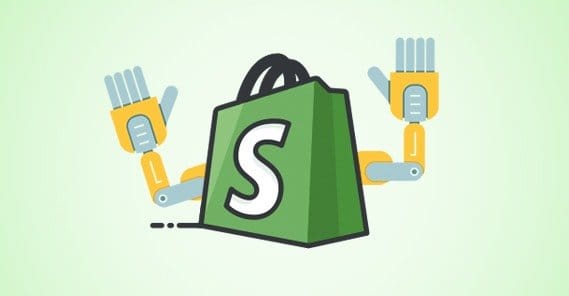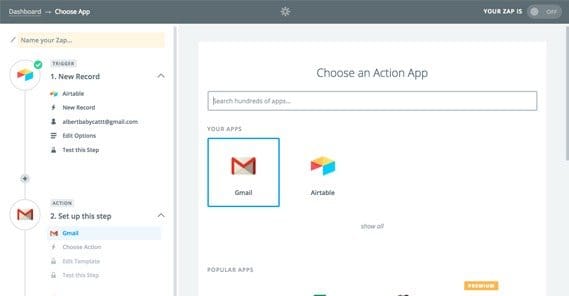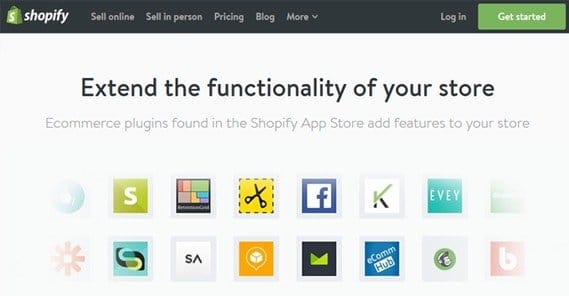How to Fully Automate a Shopify eCommerce Website

Automation in some areas can be excellent, while in others it’s not recommended. If you have some simple data entry to do every few days, you can automate it pretty easily and save yourself time. If you have a lot of customers asking questions of your service reps, you can automate some of it, but you might lose some of the benefit you get from a human touch. You can automate the scheduled posting of social media posts, but you shouldn’t automate responses to comments.
When it comes to running an eCommerce website through a platform like Shopify, automation is a huge boon. Every element of your business that you automate is time you save.
Automation does take an initial investment. In some cases, it’s a very simple investment, involving little more than installing a plugin. In other cases, it might involve some tedious coding or custom development, which you might even have to pay someone to do for you. This can make it seem like a poor investment.
Think about it this way. If you have a task that takes you half an hour every single day, that’s two and a half hours spent on that task in a given workweek. If it takes you 100 hours to develop a custom solution to automate that task, that means in 40 weeks – less than a full year – the automation will save you money. Often, it will be an even better return! It very rarely would take 100 hours to produce automation that covers something that only takes you 30 minutes at a time.
Step 1: Identify All Tasks and Processes
The first thing you need to do in order to automate a business is list down every task you can think of that needs to be done.
Some of these tasks are daily data entry, upkeep on social media, sending emails, and other tasks. Here are a number of examples you might look for.
- Sending cart abandonment emails. In 2015, it was estimated that abandoned carts globally accounted for a potential five trillion dollars in accumulated sales. Nearly 70% of all carts are abandoned. Yet you can recover these potential orders by sending emails to remind people that they left items in their cart. It’s generally a good idea to send one email reminding them of items in their cart, and if they don’t respond, another asking if there was a technical problem preventing them from making a purchase. This helps capture interest twice, as well as offering the chance for people to let you know about tech problems, compatibility issues, bugs, or issues with payment processing.
- Offering customer service. Now, it’s generally not a good idea to fully automate customer service. People have unique problems that it takes human comprehension to fix. However, there are many systems you can use to automate information gathering and providing simple solutions to common problems. Think of it like an interactive FAQ. One recent example is the Sprout Social Twitter Bot Builder, which uses Twitter messaging to ask the user questions about their issue. As they respond, the bot offers solutions. All the while, a human agent can monitor and step in at any point to prevent the frustration of dealing with a bot you can’t control.
- Inventory management. When you have a fixed stock of items, or when you want to change pricing, it can be a good idea to set up an automated database of product information. Make sure that your inventory for a product decreases when the product is purchased, so you don’t have to worry about promising more than you can deliver. There are a wide variety of possible options to automate inventory management.
- Productivity. IFTTT and Zapier are both great for free-form, flexible automation processes. For example, you can create alerts for when a product is purchased to send an onboarding email, or manipulate your calendar when a meeting is scheduled through a meeting app, and so forth. You can do anything from manipulating your Twitter profile to getting push notifications for the weather.
Remember, right now you’re not looking for solutions; that comes later. At the moment, all you’re doing is putting together as large a list as possible of processes that could be automated to save you time, even if it only saves you a few minutes per day. Every minute you save with automation is a minute you can spend doing something you can’t automate, to grow your business or set up another.
Step 2: Determine Ease of Automation
The second step on your list is to categorize your list based on how easy or difficult it is to automate the process. I like to consider four categories.
Category one is the easy to automate elements. These are things like data entry, which might only take a simple script in pretty much any programming language. It might include sending onboarding emails when a user joins a mailing list, or cart abandonment emails. Generally, category one processes have solutions already available for free or for a small fee, which you can install or configure quickly and easily.
Category two are the tasks that take a bit more effort to automate. It might include something like accounting, which requires setting up formulas or data sources in your accounting software, training an accountant, or just reviewing your data to make sure you’re not misrepresenting your business. It might also include elements that don’t have many solutions already available, or processes that have not-quite-perfect solutions you would have to customize. If you need A, B, and C done, but the program you find only does A and B, it goes into this category.
Category three are the tasks that are difficult to automate. Anything custom about your brand will generally fall into this category. These are business processes that you either have no idea how to automate or that require custom solutions. Things like the Twitter bot builder I mentioned above would fall into this category; it’s a hybrid solution that requires you set up a bot from scratch, and requires an expensive plan to gain access.
Category four are the processes that are impossible to automate. Going to meetings with potential partners, calling wholesalers for new dropshipping products, and other such processes cannot be done automatically.
It’s worth noting here that you CAN outsource some of the category four processes. You can always hire someone to do your cold calling for you, to save more of your own time. This is, however, not automation, and it’s expensive. It’s outside the purview of this post, as well.
Step 3: Look for Existing Solutions
The third step is to start with your category one processes and look for existing solutions, and work your way through the whole list. You might discover that some processes are actually harder or easier to automate than you thought, and may need to re-categorize them. If you find a category one process that is actually category three, don’t spend a ton of time on it, skip it and move on. You can come back to it when you’ve picked the low hanging fruit first.
Shopify is a great platform for creating an eCommerce store specifically because it works very well with plugins. They have a huge pile of apps, some of which are free and some are paid, all of which can automate parts of your business. Here are some of the best options, though you can always browse the store for more.
- Back In Stock – This app costs $20 per month or more depending on the plan. What it does is allows users to sign up for an alert if a product they want to buy is out of stock, and automatically sends an email to that list of users when the product comes back in stock. Depending on the scale of your business and the availability of your products, it can be amazingly useful.
- Oberlo – This app is free for some uses. It’s essentially a massive assistant for a dropshipping business. You can import dropshipping products en masse, you can handle order confirmation and fulfillment, you can automatically update inventory and pricing, you can customize product descriptions, you can track shipping, and a lot more. Pricing depends on the number of orders you process per month.
- SmartrMail – Pricing is $19 per month plus a scaling fee per customer. You know how when you buy something on Amazon, or when you look at certain products, you will start getting emails with similar products on offer and deals on products in that category? This is what SmartrMail does for you. It creates customized product recommendation emails based on user browsing and sends them out automatically.
- Social Autopilot – This free app is essentially some basic social media integration. When you publish a new blog post or list a new product, it triggers a post on the social media platforms of your choice. This should not be your ONLY social media presence, but it can easily be part of it.
- Simple Shop Automation – This is a free-form app with various events and triggers, sort of like an in-Shopify example of IFTTT or Zapier recipes. There are a lot of different options you can configure based on your needs. For example, you can tag customer accounts with flags based on amount purchased over a lifetime. You can hide products when they go out of stock and notify your staff to order more. You can dynamically change product pricing based on availability. You can even set up notifications daily or weekly with sales reports, inventory reports, and other information.
There are a lot more, of course, but these are just some of my favorites. We’ve reached a point where there are honestly very few processes that aren’t automated in some way already, as long as you aren’t using some kind of custom back-end system.
Step 4: Develop Custom Automation Solutions
Once you have implemented any solutions you can find, it’s time to start developing your own. In some cases, this means learning some programming language – if you don’t already know a couple – and writing scripts or apps to automate your own processes. You can also pay someone via Upwork or Fiverr to code something, though you should know at least enough programming to be able to analyze their code to make sure it’s not installing a backdoor, processing data through a third party platform you can’t control, or otherwise opening you up to hacking or theft.
I’ve mentioned them a couple of times already, but Zapier and IFTTT are both engines for creating custom automation processes using existing APIs for various services. If you’re trying to automate something in a Google app, a social media platform, or one of their supported services, you can use one of these sites to create your automation.
Step 5: Pursue Further Developments
With all the time you have saved, you can expand your businesses or create new ones. If you created a functional and profitable dropshipping business that focuses on apparel, you can take the framework of that business and adapt it to a new business centered around a different type of product. You can slowly build up a network of sites, each of which operating in their own niche, each of which automated almost entirely. You will still need to do some things yourself, but a lot of it you can handle with the time you’ve saved. Alternatively, you can use the profits you’re making with a smoother, faster business and invest them in hiring people to manage other elements for you.
If you play your cards right, you could run a successful business empire with virtually no effort on your part. It’s amazing how much you can accomplish with entrepreneurship when you have the power of automation at your site.
 ContentPowered.com
ContentPowered.com








